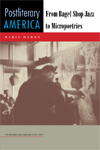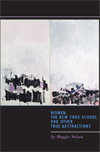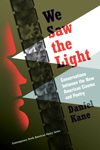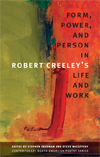Postliterary America
“Maria Damon sets us on a path toward a poetics of culture that has long been promised by prominent scholars within the cultural studies sphere but, until now, seldom delivered. Postliterary America: From Bagel Shop Jazz to Micropoetries provides a rare juxtaposition of poetics, race, ethnicity, and gender, showing how ‘insider’ art made by ‘outsiders’ becomes canonical and how innovative literature enters the mainstream.”—Aldon Nielsen, author, Integral Music: Languages of African American Innovation
“Postliterary America makes key connections between the seemingly disparate fields of poetics and cultural studies. Indeed, Maria Damon persuasively argues for reading poetry in dialogue with its social and cultural contexts. Weaving together threads of beat poetics, cultural critique, queer theory, ethnography, and the social diversity of race, gender, and class analyses, Postliterary America presents nothing less than a sophisticated tapestry of contemporary American culture.”—Walter Kalaidjian, author, The Edge of Modernism: American Poetry and the Traumatic Past
In this capacious and challenging book, Maria Damon surveys the poetry and culture of the United States in two distinct but inextricably linked periods. In part 1, “Identity K/not/e/s,” she considers the America of the 1950s and early 1960s, when contentious and troubled alliances took shape between different marginalized communities and their respective but overlapping bohemias—Jews, African Americans, the Beats, and gays and lesbians. Using a rich trove of texts and artifacts—ranging from Gertrude Stein’s writings about her own Jewishness to transcripts from Lenny Bruce’s obscenity trial, Bob Kaufman’s Beat poetry—as well as her own stake in the material, Damon plumbs the complexities of social identity and expressive cultures to fascinating effect.
Always erudite but never effete, Damon then turns to more contemporary issues and broader topics of poetics: micropoetries, cyberpoetics, spoken-word poets, performance poets, and their communities. Echoing many of the themes of the first section of the book, including poetic identity and the troubled nature of the poetic “I,” part 2’s “Poetics for a Postliterary America” goes on to paint a wider picture, dwelling less on close readings of individual poems and more on asking questions about the nature of poetry itself and its role in community formation and individual survival. Discussions of counterperformance, kinetics, the Nuyoricans, Latino identity, and electronic poetics enliven this section.
Never reluctant to acknowledge the deeply personal origins of the work at hand, Damon cleaves to the subject matter, be it questions of identity, matters of poetry, or what it means to live in a postliterary culture. In doing so, she dares to ask what it means to be a member of the “shadow people”—those who occupy marginalized, nocturnal counterculture—creating verbal art.






